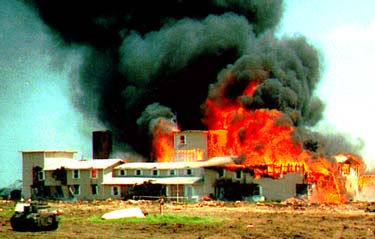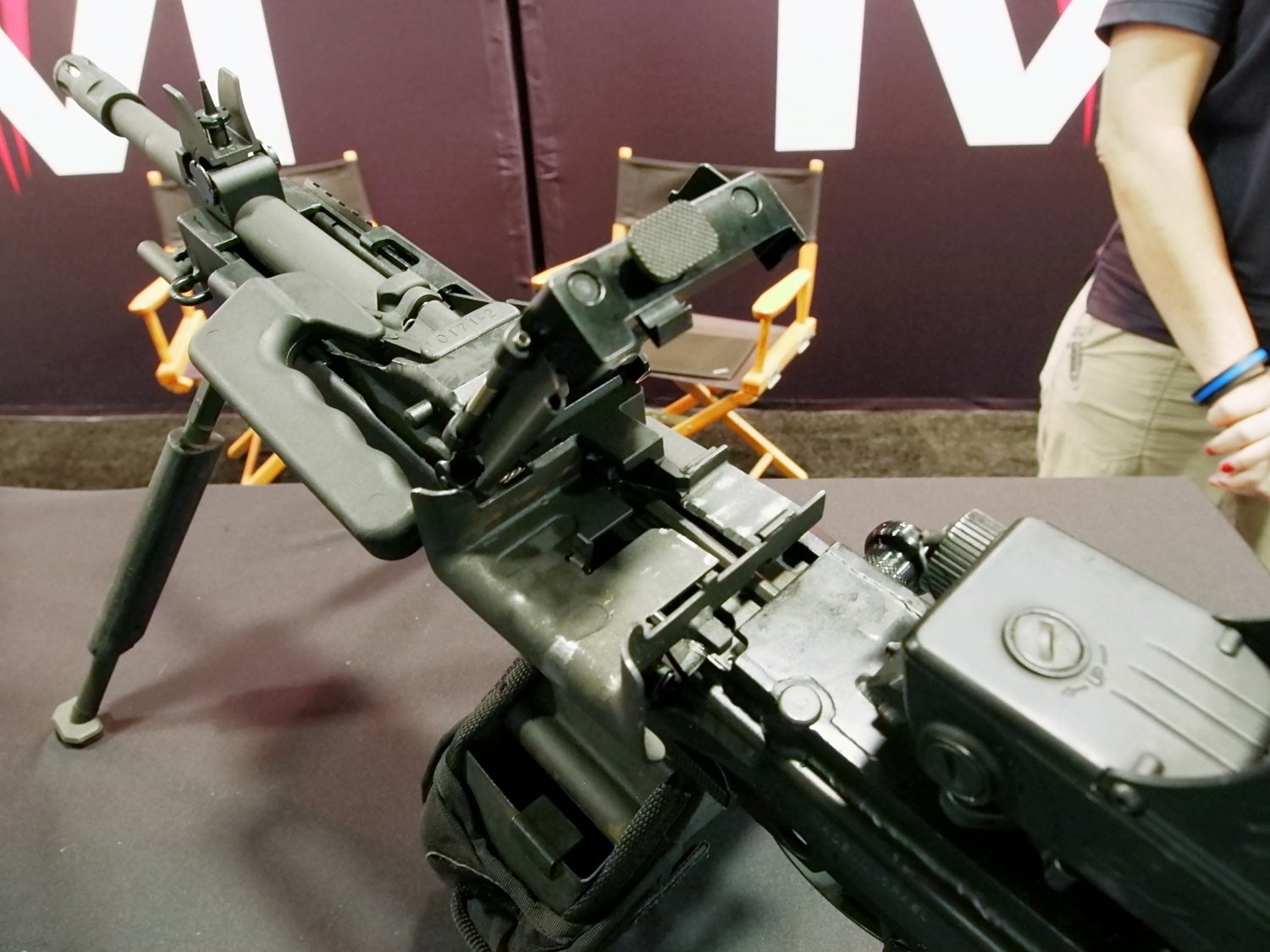A black student wrote those racist messages that shook the Air Force Academy, school says
Lt. Gen. Jay Silveria, superintendent of the
U.S. Air Force Academy, spoke to cadets and cadet candidates on Sept. 28
after racial slurs were written on the dormitory message boards of five
black cadets at the academy’s preparatory school.
(USAFAOfficial/YouTube)
In
late September, five black cadet candidates found racial slurs scrawled
on message boards on their doors at the U.S. Air Force Academy
Preparatory School. One candidate found the words “go home n‑‑‑‑‑‑”
written outside his room, his mother posted on social media, according
to the
Air Force Times.
The racist
messages roiled the academy in Colorado Springs and prompted the school
to launch an investigation. They led its superintendent to deliver a
stern speech that decried the “horrible language” and drew national
attention for its eloquence.
Surrounded by 1,500 members of the
school’s staff, Lt. Gen. Jay Silveria told cadets to take out their
phones and videotape the speech, “so you can use it . . . so that we all
have the moral courage together.”
“If you can’t treat someone with dignity and respect,” Silveria said, “then get out.”
The
speech, which the academy posted on YouTube, went viral. It was watched
nearly 1.2 million times, grabbed headlines nationwide, and was
commended by former vice president
Joe Biden and Sen.
John McCain (R-Ariz.).
But
on Tuesday, the school made a jolting announcement. The person
responsible for the racist messages, the academy said, was, in fact, one
of the cadet candidates who reported being targeted by them.
“The
individual admitted responsibility and this was validated by the
investigation,” academy spokesman Lt. Col. Allen Herritage said in a
statement to the Associated Press, adding: “Racism has no place at the
academy, in any shape or form.”
The cadet candidate accused of crafting the messages was not identified, but the
Colorado Springs Gazette
reported that the individual is no longer enrolled at the school.
Sources also told the Gazette the cadet candidate “committed the act in a
bizarre bid to get out of trouble he faced at the school for other
misconduct,” the newspaper reported.
The announcement thrust the
Air Force Academy Preparatory School onto a growing list of recent “hate
crime hoaxes” — instances in which acts of racism or anti-Semitism were
later found to be committed by someone in the targeted minority group.
On Monday,
police in Riley County,
Kansas, revealed that a 21-year-old black man, Dauntarius Williams,
admitted to defacing his car with racist graffiti as a “Halloween prank
that got out of hand.” Scrawled in washable paint were racist messages
telling blacks to “Go Home,” “Date your own kind,” and “Die.” The
incident provoked controversy and concern at nearby Kansas State
University, especially after Williams spoke with the Kansas City Star,
claiming to be a black student who was leaving the school because of the
incident. He was not, in fact, a student.
Officials decided not
to file criminal charges against Williams for filing a false report,
saying it “would not be in the best interests” of citizens of the
Manhattan, Kan., community, police said in a
news release. They said Williams was “genuinely remorseful” for his actions and published an apology on his behalf.
“The
whole situation got out of hand when it shouldn’t have even started,”
Williams said in the statement. “I wish I could go back to that night
but I can’t. I just want to apologize from the bottom of my heart for
the pain and news I have brought you all.”
When
reports circulated last week about the racial slurs on the car, African
American students at the nearby Kansas State University campus held a
meeting to talk about the incident.
Andrew Hammond, a journalism student at Kansas State, told the
Kansas City Star Monday he was “outraged and hurt” to learn the crime was fake.
“As
a black student who has witnessed racist incidents first-hand around
Manhattan this hurts the credibility of students who actually want to
step out and say something about it,” Hammond said. “I’m not sure what
type of human being does this kind of thing as a prank.”
About three weeks earlier,
police announced
that a 29-year-old black man, a former student named Eddie Curlin, had
been charged in connection with three racist graffiti incidents at
Eastern Michigan University: “KKK” sprayed on a dorm wall, messages
ordering blacks to leave scrawled on a building, and a racist message
left in a men’s restroom stall.
It’s unclear exactly what prompts
people to commit these hoaxes, stunts and false reports. But
such revelations have become a major concern for civil rights activists
who document racist and anti-Semitic incidents, particularly amid a
rise in reported hate crimes since the 2016 general election.
“There
aren’t many people claiming fake hate crimes, but when they do, they
make massive headlines,” Ryan Lenz, senior investigative writer for the
Southern Poverty Law Center Intelligence Project, told
ProPublica. All it takes is one false report, Lenz said, “to undermine the legitimacy of other hate crimes.”
These
reports have also energized many right-wing commentators and President
Trump supporters, who argue that reports about hate speech and racist
graffiti are often fake accounts disseminated by liberal media.
“Anyone
(including the lapdog media) who was surprised by this hate crime hoax
hasn’t been paying attention,” Jeremy Carl, a research fellow at the
right-leaning Hoover Institution at Stanford University,
tweeted
early Wednesday in response to the news about the Air Force Academy
Preparatory School. “The stream of fake hate crimes became a flood after
Trump’s election.”
“HATE HOAX: Air Force Academy Cadet Candidate Wrote Fake Racist Messages Himself,” read a headline in the conservative
Daily Caller.
There is even a website — fakehatecrimes.org — committed to listing hate crime hoaxes.
In August, Sebastian Gorka, then-deputy assistant to Trump and his spokesman on national security matters, appeared on
MSNBC to explain
why the president hadn’t condemned the bombing of a mosque in
Bloomington, Minn. He suggested it was because the attack may have been a
“fake” hate crime.
“There’s a great rule: All initial reports
are false,″ Gorka said. “We’ve had a series of crimes committed, alleged
hate crimes, by right-wing individuals in the last six months, that
turned out to actually have been propagated by the left.”
Despite the string of frauds, experts on hate crimes say that false accounts are still relatively rare.
Brian Levin, director for the Study of Hate and Extremism at California State University at San Bernardino, told
Talking Points Memo
that hoaxes do appear in hate crime reports, just as they do in reports
of other criminal offenses. But these fakes are a “tiny fraction” of
the hundreds of hate crimes reported to law enforcement every year.
“These
hoaxes have become symbols for some who want to promote the idea that
most hate crimes are hoaxes,” Levin said. “That’s important to rectify.”
And indeed, scores of these incidents are cropping up across the country, particularly on college campuses.
Using a ProPublica database,
BuzzFeed News
found 154 total incidents of hate speech at more than 120 college
campuses nationwide. More than two-thirds promoted white supremacist
groups or ideology, while more than a third cited Trump’s name or
slogans, BuzzFeed News reported.
Yet authorities
caught fewer than 5 percent of perpetrators in cases of vandalism or
threats. In at least three instances, college officials determined the
incident was a hoax, according to BuzzFeed News.
On Tuesday,
Silveria, the Air Force general who gained national fame for his
speech condemning the September incidents at the preparatory academy,
stood by his original remarks.
“Regardless of the circumstances
under which those words were written, they were written, and that
deserved to be addressed,” Silveria told the Colorado Springs Gazette in
a Tuesday email. “You can never over-emphasize the need for a culture
of dignity and respect — and those who don’t understand those concepts,
aren’t welcome here.”







